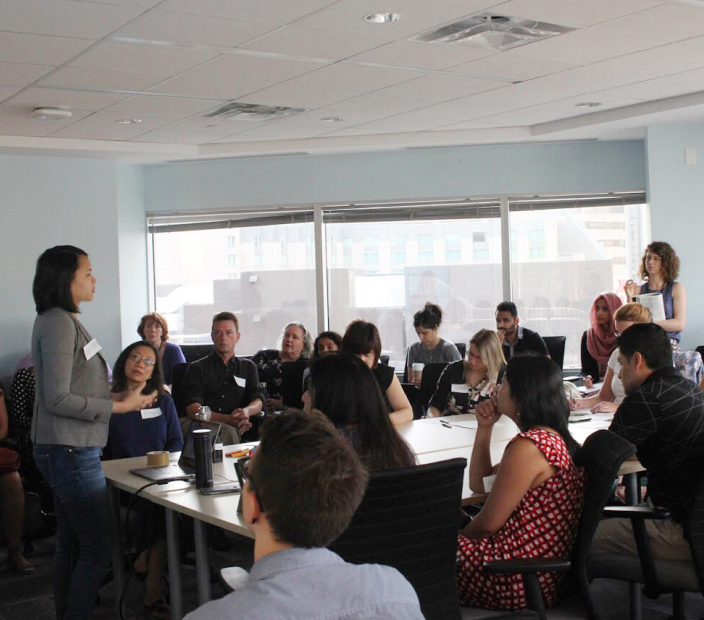There were many questions about user research
When I first joined the Ontario Public Service (OPS), I was asked some challenging questions from OPS employees. Here are some highlights:
Conducting user research
- How do you conduct interviews online?
- What is the protocol for recording participants?
- Do you have existing research plans we can use for reference?
Streamlining research operations
- How much are we supposed to pay participants?
- How do you recruit participants in my ministry?
- Do you have an existing template to get consent from participants?
Identifying research objectives
- When is the best time to do user research?
- How long will it take to do user research?
- When do you know that you have done enough user research?
Getting stakeholder buy-in
- How do you get approvals to do user research?
- How do I communicate the value of user research to my superiors?
- How can I get my superiors more involved when they are so busy?
What employees wanted
- Standardized user research guidelines.
- Answers quickly, ideally before going through approvals.
- Feedback on their projects from our user research team.
- A space to do user research with their participants.

User research open house in Toronto 2018.

View of overflow room.

Audience taking notes.
User research guide

Additional user research support

Lab spaces for user research sessions
The lab team offered space and equipment for any OPS member to conduct user research when needed.

User research drop-ins
Any OPS member could drop-in at the lab and get expert user research and design advice from a team of experience designers. The 2 hour drop-in sessions took place every 2 weeks.

In-house user research projects
The lab team took on high priority user research projects from ministry partners when we had capacity. They could also find qualified service designer and user researches from a vendor list.

How the user research lab has made an impact
In the span of over a year from August 2018 to September 2019, the user research lab has connected with ministry partners to collectively share and implement best user research practices.
User research guide
Unique page views for Ontario’s User Research Guide with no marketing spend.
Average time spent on the page. This is one minute higher compared to other pages on ontario.ca.
Scroll to the bottom of the page.
User research drop-ins
Drop-in sessions were hosted to answer any questions or share expertise about user research and design.
OPS employees and contractors have shown up in the drop-ins to talk about challenges and needs.
Ministry departments connected at user research drop-in.
Takeaways
- Although there are not many unique visitors to the user research guide, data suggests that people are engaged with the content once they land on the page.
- Keeping the drop-in sessions informal created an open, non-judgemental and inclusive environment to hear shared experiences.

- By connecting many ministry partners together, we were able to identify duplicate initiatives for the same problem. This enabled teams to connect with each other, diversify their approach and create more meaningful services.
- In ministry departments that have only one analyst working on multiple products, it created a space to learn and bounce ideas off each other.
Acknowledgements
Champions of excellent service standards.

Katherine Benjamin
Katherine started and managed user research labs in Kitchener and Toronto until 2018. The labs implemented user-centred service design practices across OPS.

Shannah Segal
Shannah is our head of experience design chapter and has led the Service Design vendor of record for teams across the OPS to consult with service design experts.

Xiaopu Fung
Xiaopu led the Kitchener lab since 2018 and led many weekly design sprints, which incorporates user research and prototyping to validate concepts quickly.

Nadine Adelaar
Nadine and I worked together to start the user research drop-ins, which became a tradition and has served many members of the OPS with their user research inquiries and projects ever since.

Honey Dacanay
Honey led the Ontario Digital Service Standard and Simpler, Faster, Better Services Act. Her work has been crucial to raise the standards for high quality digital government services.

Dana Patton
Dana is the primary author of the Service Design Playbook. Dana is the founder of Service Design Guild, where you can connect with the community and attend many workshops and events.

Sameer Vasta
Sameer introduced 8 principles for digital leadership with the focus on people and what it means to be a public service leader in the internet era.

Hillary Hartley
Hillary is our shit umbrella, our leader for all things digital in government, and has been a long time champion for user-centered government services.
Guides and mentions
From most to least recent.

How to be Digital in the Canadian Public Service
Contributor
2023

Design research guide
Adapted from Ontario’s user research guide.
2020

User research guide
Author
2018


Ontario Digital Service Lab at Communitech wants to help government embrace digital services
2017



